Ong Ye Kung: Singapore must be decisive, but with checks & balances

It was just yesterday (April 23) that the candidates for the general elections were announced, and things are heating up.
From a shocking walkover to multi-cornered fights, Singapore is expecting fierce contests between political parties for potential parliamentary seats, with numerous factors influencing the outcome.
Singaporeans are concerned about the US tariffs
An issue that has dominated headlines leading up to GE2025 is the US tariffs, which have since significantly disrupted the global trade system. However, some believe that the average Singaporean might not understand its impact.
Singapore’s Minister of Health, Ong Ye Kung, who previously served as the Deputy Trade Negotiator behind the Singapore-US Free Trade Agreement (FTA), shared his worries on a live stream with The Daily Ketchup.

Mr Ong started by saying that the introduction of the tariffs had raised questions on whether the rules of free trade are bound to change and how the international trade system will continue to operate, which is highly dependent on how other countries respond to it.
However, it brings a “long period of uncertainty,” which directly affects the global economy and job market.
“I am hearing from several sectors that people are saying that things are slow. There’s no investments [coming in], people are holding back, even real estate agents are telling me that it’s hard to see transactions.”
As Singapore is heavily reliant on trade for its growth, the city-state plays an active role in the international ecosystem. This creates a domino effect that encourages other world leaders and trade ministers to understand the overall sentiment and engage in free trade.
Checks and balances are necessary in Parliament
Navigating global issues is often complex, and Singaporeans look to their country’s leadership for guidance and direction.
However, as the city-state has a dominant party, the People’s Action Party (PAP), which has held the majority for decades, some have questioned whether the Parliament lacks diversity in views.
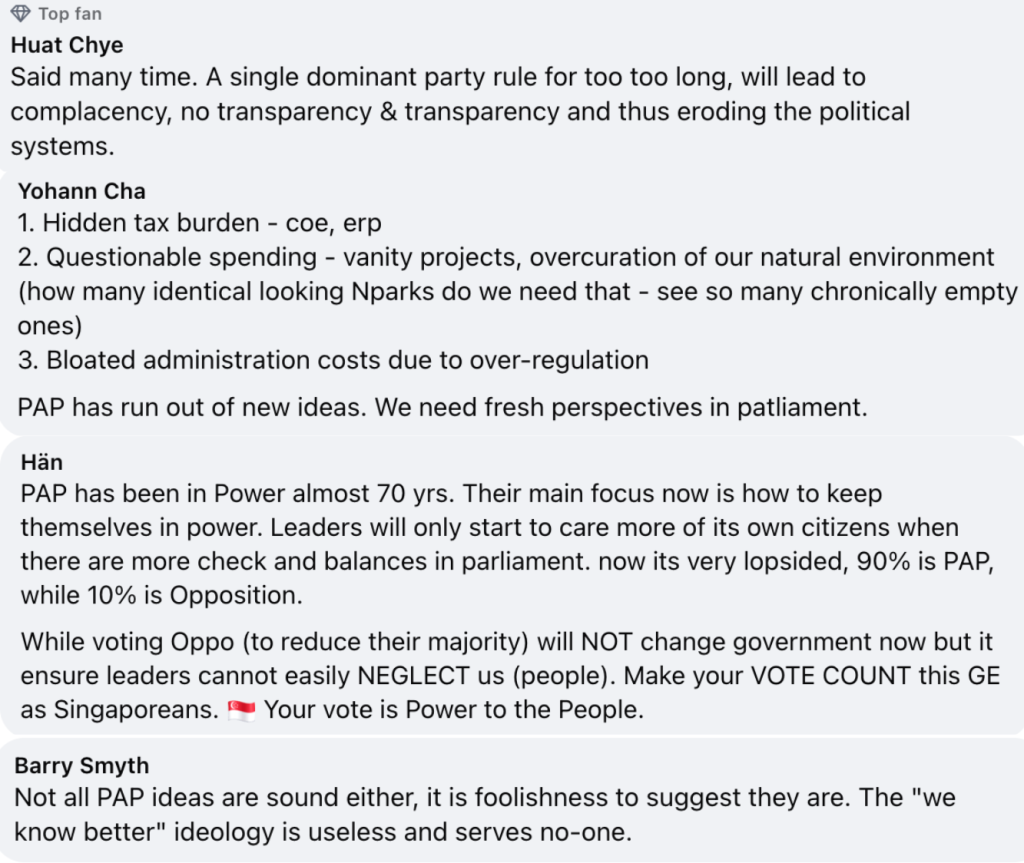
Mr Ong, who is currently running under the PAP as an anchor minister for Sembawang GRC, shares the same sentiment.
“If any parliament is just one party, surely there is a lack of diversity. Nobody will argue against that,” he said. “So, therefore, I think we have to embrace the fact that people want some different views.”
In GE2020, Singapore witnessed a surge in opposition voices in Parliament, with the Workers’ Party securing 12 seats and the Progress Singapore Party gaining two seats under the Non-Constituency Member of Parliament (NCMP) scheme.
Reflecting on the performance of the previous Parliament, Mr Ong believes that the politics has been “stable” and there is discourse amongst different members.
On one hand, I feel that the PAP can still be decisive, we can still adapt, we can still move quite fast for a small country. On the other hand, we can’t push things around and bulldoze things, because there is a check and balance, so much so that these days, when we put out a legislation, we have to think about what the opposition would say.
Minister of Health Ong Ye Kung speaking on a livestream on The Daily Ketchup
Impact of the opposition getting 1/3 of the seats
Some netizens have also spoken out online, expressing the need for a stronger opposition in Parliament, with the hopes of them occupying one-third of the seats. However, Mr Ong remains wary of having more opposition voices, as that could result in an adverse outcome.
On the livestream with The Daily Ketchup, he explained the opposition will continue to be loyal, but once they occupy one-third of the seats, they might harbour a new ambition to become the majority party in Singapore and obstruct the current government.
Over the years, the world has seen cracks in democratic countries, notably the US and the UK, which are marked by political turmoil. A global watchdog warned in its report that the US could lose its democratic status, and 63% of the UK’s young adults believed that democracy is “in trouble.”
However, the US and the UK are global superpowers, with populations and geographical size vastly larger compared to the tiny red dot, which implies that there is a high probability that Singapore may not survive similar levels of chaos experienced in larger and more mature democracies.
Chaos doesn’t work for us, we are already small and that’s a disadvantage. If we are small and chaotic, finish lah! At least be small and decisive, but with checks and balances.
Minister of Health Ong Ye Kung on The Daily Ketchup podcast
-//-
During the live stream, Mr Ong also spoke about a range of other topics—including some lighthearted ones, such as his MBTI personality type. You can catch the full stream here:
Check out our GE2025 microsite for the latest election-related news, find out which constituency you belong to, and who’s running where on the election battleground here.
Also Read: Handwritten names and empty stages: How GE2025 took an unexpected turn
Featured Image Credit: The Daily Ketchup
GE2025: Singapore could have 4 parties in the Parliament, as SDP tries to break the dry spell
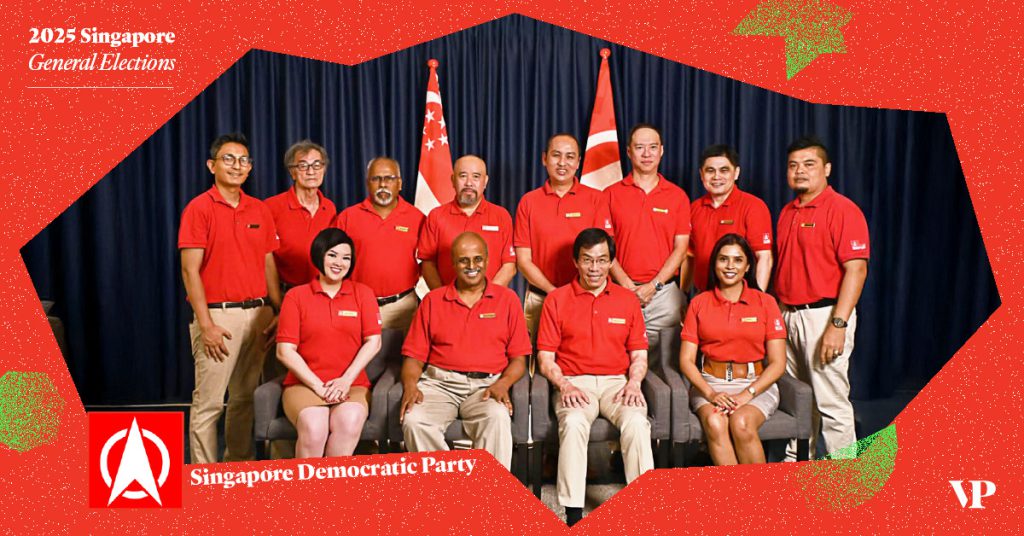
Disclaimer: Opinions expressed below belong solely to the author.
In 2020, Singapore saw a third party enter Parliament, with the Progress Singapore Party (PSP) securing two Non-Constituency Member of Parliament (NCMP) seats after narrowly losing to the People’s Action Party (PAP) in the tightly contested West Coast GRC.
This year, another surprise could be in the works, as the Singapore Democratic Party (SDP) is aiming to end its nearly 30-year absence from Parliament.
It put up a strong showing last time—Secretary-General Chee Soon Juan garnered over 45% of the vote in Bukit Batok SMC, while Chairman Paul Tambyah did even better with 46.27% in Bukit Panjang.
An early blow came when Bukit Batok was removed from the electoral map, but Chee’s move to Sembawang West still leaves him with a shot.
Two seats in contention
SDP is fielding 11 candidates across four constituencies for GE2025, but a win in Marsiling-Yew Tee—held by Lawrence Wong—or in the three-way battle in Sembawang, against Minister Ong Ye Kung’s team and the National Solidarity Party (NSP), looks like a long shot, especially with the opposition vote likely to split.
This is likely why SDP’s top two—Chee in Sembawang West and Tambyah in Bukit Panjang—are both contesting in single-member constituencies, setting up direct, one-on-one fights with PAP candidates.
After earlier, underwhelming attempts to take on GRCs, the party shifted tactics a decade ago—and saw their results improve.
In 2015, their team in Holland-Bukit Timah GRC managed to secure just 33% of the vote. But five years later, individual performances jumped by more than 10 percentage points.
This time, Paul Tambyah is aiming to narrow that gap even further in a rematch against PAP’s Liang Eng Hwa, who won the last round with a slim 7.46% majority.
Chee Soon Juan’s strategy is harder to read, but his trajectory has been upward—from 38% in his 2016 by-election debut against Murali Pillai, to 45.20% in 2020.
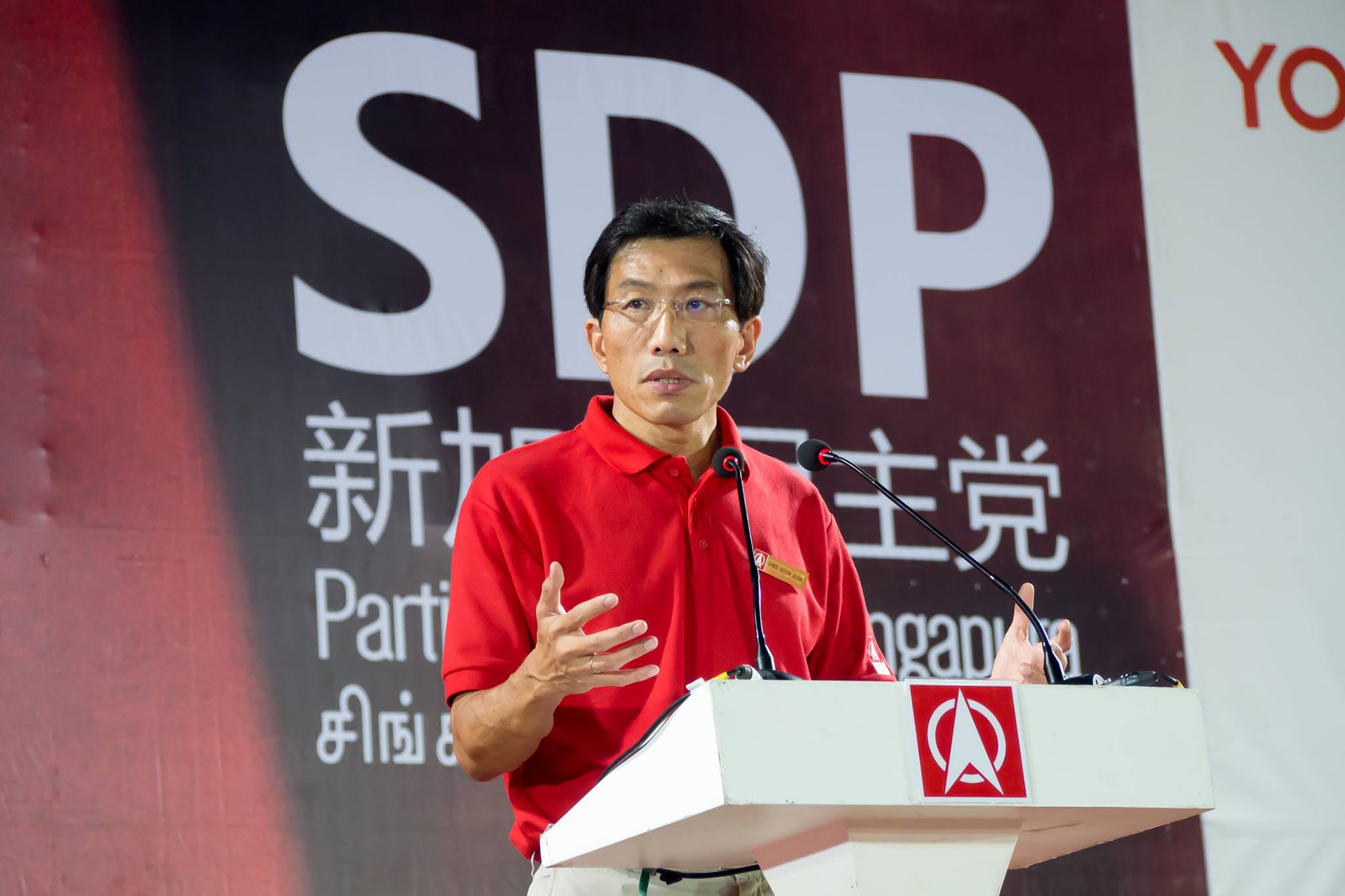
With his former constituency dissolved, Chee Soon Juan has moved to Sembawang West, where he’s up against a relatively new face in the PAP lineup: Poh Li San—a former aide-de-camp to President S.R. Nathan and RSAF helicopter pilot, who entered Parliament as a Sembawang GRC MP in 2020.
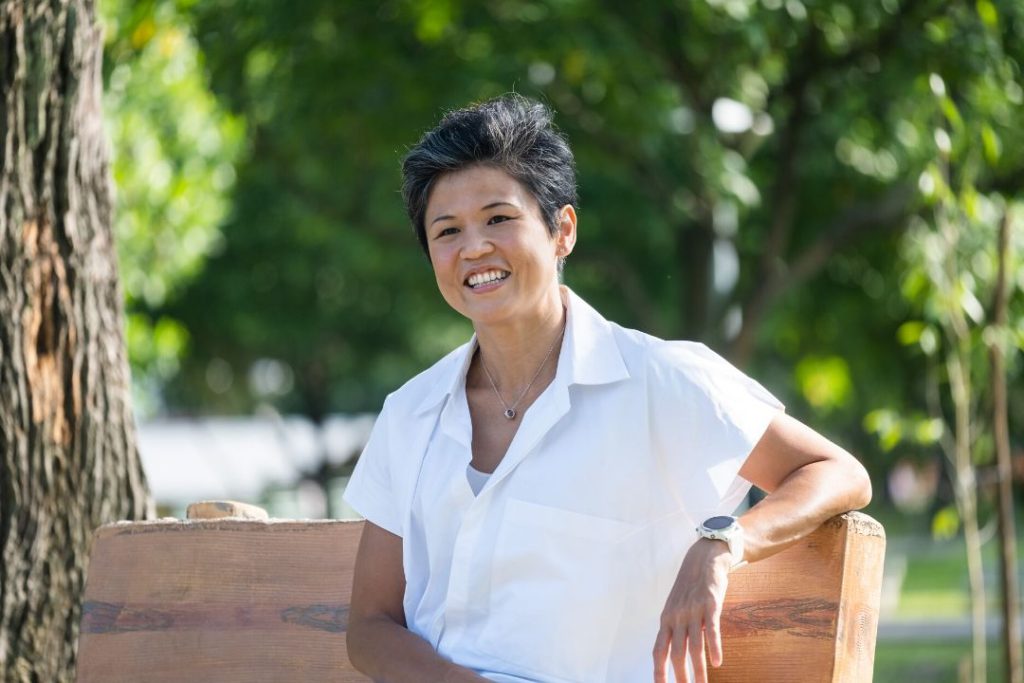
Though she heads the PAP’s Sembawang West branch and was a grassroots volunteer in the area before becoming an MP, this will be Poh Li San’s first time running as a standalone candidate, against a well-known, if thus far unsuccessful, opposition figure.
It could be a tight race.
Direct victory is not necessary
What’s important to note is that neither of SDP’s frontrunners needs to win outright to enter Parliament. Under the NCMP scheme, opposition parties are guaranteed at least 12 seats, even if they don’t win any constituencies directly.
In 2020, after the Workers’ Party secured 10 elected seats, the Progress Singapore Party filled the remaining two NCMP spots thanks to its narrow loss to the PAP in West Coast GRC.
However, neither party can be certain of retaining those positions. WP’s team in Sengkang has been shaken by the Raeesah Khan scandal, while PSP’s Leong Mun Wai was hit with a POFMA correction order last year.
Tan Cheng Bock’s support for outsider Tan Kin Lian in the 2023 presidential race may not have helped either, even as the PAP contends with the fallout from the S. Iswaran scandal.
If other opposition parties falter, it could open the door for either Chee Soon Juan or Paul Tambyah to clinch at least one NCMP seat, especially if their contests against the PAP are tighter than before.
In fact, both came close to meeting the threshold for best-performing losing candidates five years ago.

While most attention is on the Workers’ Party’s showdown with the PAP (some eyes are turning to the West too, to see if PSP can outperform its last showing), the Singapore Democratic Party shouldn’t be counted out for a surprise of its own.
Check out our GE2025 microsite for the latest election-related news, find out which constituency you belong to, and who’s running where on the election battleground here.
Also Read: GE2025: Punggol GRC is the Workers’ Party’s biggest opportunity but also the toughest fight
Featured Image Credit: The Singapore Democratic Party/ Graphic designed by Vulcan Post
GE2025: What is a sample count and is it even accurate?
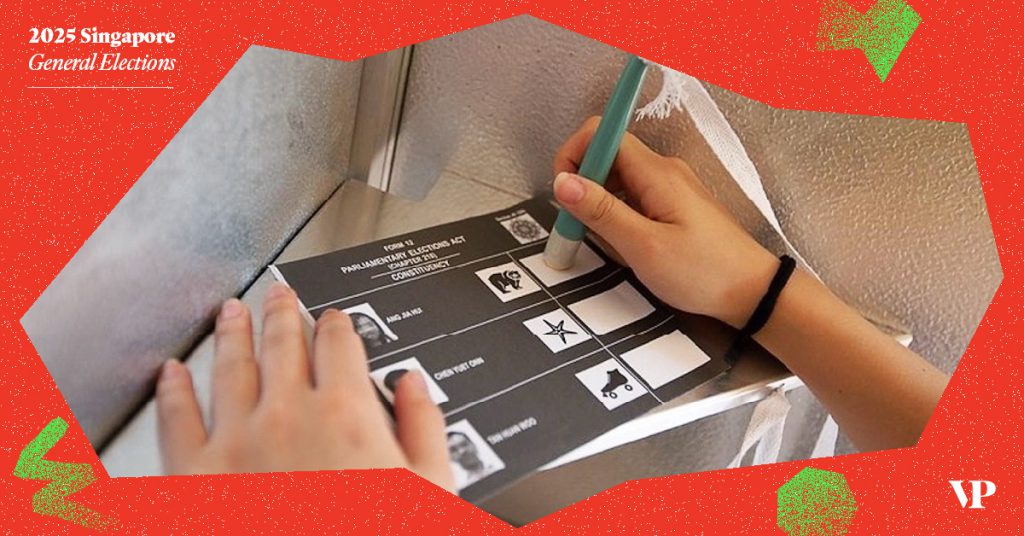
Singapore is well into the election season and is set to hold its general election (GE) on May 3.
Now that we are about a week away from Polling Day, here’s an explainer on a sample count—what is it and how does it differ from the election result?
After all the votes are cast, Singaporeans will be anticipating the results of the election. However, before the votes are counted, a sample count is performed first.
What is a sample count?
A sample count provides an early indication of the possible election results.
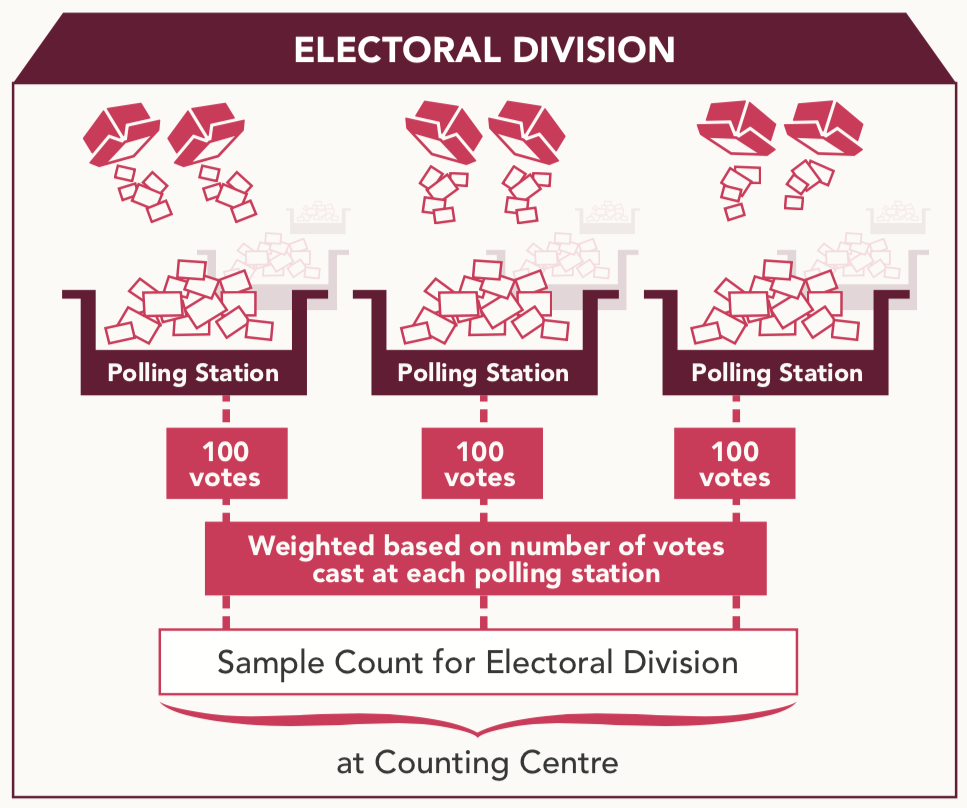
After voting closes, ballot papers from the islandwide polling stations will be put in sealed boxes and transported to counting centres.
A counting assistant picks up 100 random ballot papers from each polling station and counts the number of votes for each candidate or group (in the case of GRCs).
The votes will then be added up and weighted according to the number of votes cast at each polling station.
The results from the sample count will then be disseminated to the media and published on the Elections Department (ELD) website.
Why do we need a sample count?
The sample count aims to prevent unnecessary speculation and reliance on unofficial sources while the counting process is still underway.
GE2015 marked the first time the sample counts were released to all the Group Representation Constituencies and Single-Member Constituencies.
Prior to that, sample counts were conducted for internal use by the ELD only. In the 2011 election, candidates could request for the sample count to be made known to them.
Releasing the sample counts to the public is even more relevant for the GE2025, when a large population of the electorate is more networked and media-savvy. This could lead to the proliferation of unreliable information.
How accurate is a sample count?
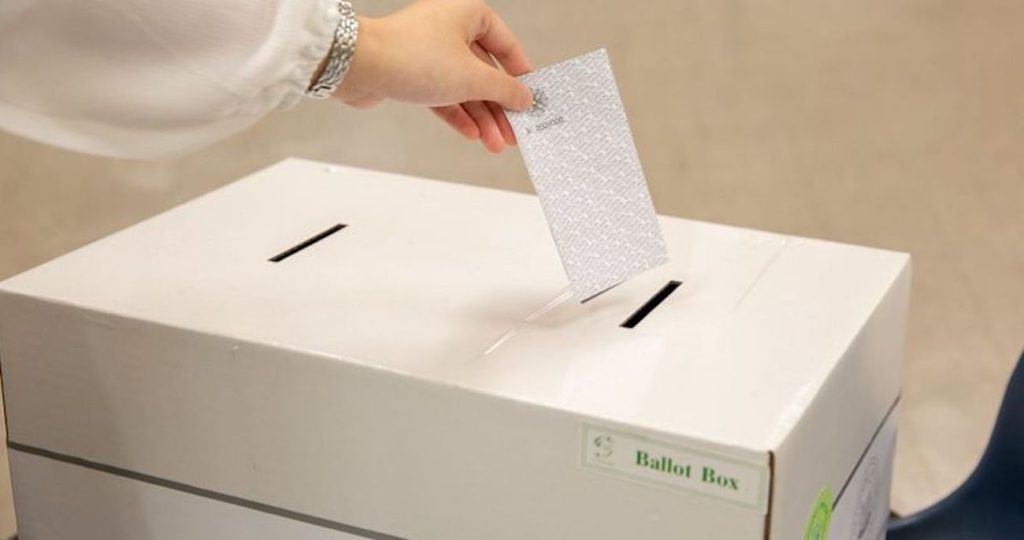
In the 2015 elections, sample counts closely mirrored the final results, with discrepancies ranging from 0 to 3%.
Similarly, in GE2020, the deviations between the sample counts and final results were also relatively small—mostly falling within 0 to 4 percentage points.
Hence, if one political party is ahead by a larger margin, it is highly likely that they will take the constituency.
If the difference in votes between candidates contesting a constituency is 2% or less, an automatic recount will be carried out. Previously, candidates or counting agents had to apply for a recount.
Check out our GE2025 microsite for the latest election-related news, find out which constituency you belong to, and more here.
Also Read: GE2025: What happens if you don’t vote on Polling Day in Singapore?
Featured Image Credit: Petir.sg/ Graphic designed by Vulcan Post
An ode to my fave K-BBQ spot in Ara Damansara, who won’t reply to my interview questions
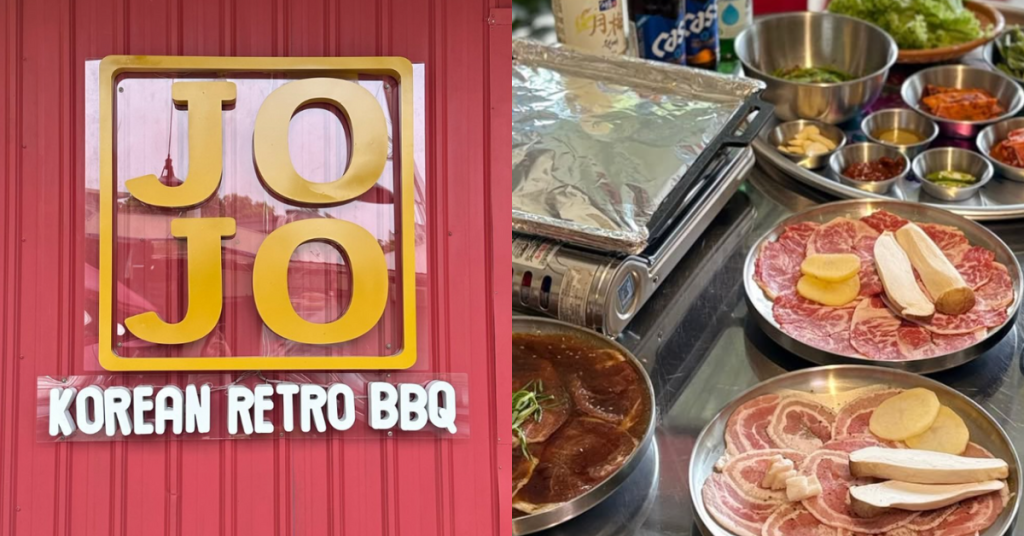
One fateful day five months ago, I came across a post promoting a new Korean restaurant by the name of Jojo Sikdang in Ara Damansara.
The food looked good, and I frequent that area, so it was a no-brainer to try. At the same time, I wanted to reach out and have an interview with the founders, curious to know more about the business I was patronising.
After getting in touch with their team, I sent out my interview request. Sadly, I haven’t been able to maintain contact. And yet, every now and again, I’ll message them a little follow up, in hopes that they would reply.
In this period of waiting, I’ve visited Jojo not once, not twice, but four times. Heck, I even went for my birthday celebration.
And despite not knowing it was my birthday the next day, the kind storeowner gave us some 서비스 (seobiseu)—dishes on the house—saying that it paired well with the makgeoli (rice wine). It was silken tofu with grilled kimchi and pork. Insane pairing. Devastatingly delicious.
Moved by this kindness, I feel compelled to tell you about this busines—even though they won’t tell me about themselves.
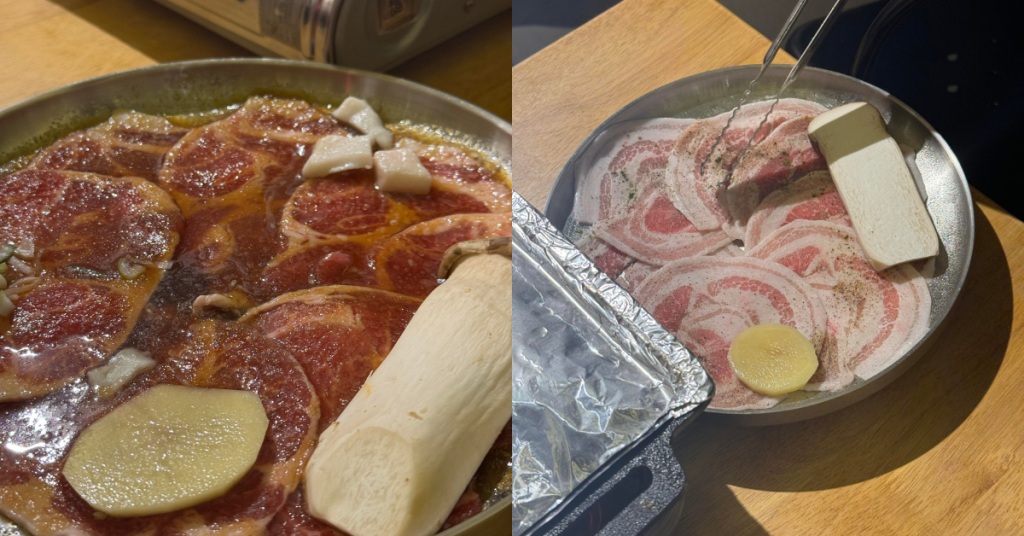
Here’s what I know
One unique menu item at Jojo Sikdang’s offerings is its kkot sam—thinly sliced pork belly shaped into a flower.
Jojo might just be one of the only places in Malaysia that offers the dish. Now, it’s nothing too different from the usual pork belly, but it’s certainly just as thin, delicate, tender, and delicious as good pork belly typically is—but more on the food later.
The owners appear to be a couple from South Korea, with the lady boss having appeared on social media content. Meanwhile, the husband is someone I’ve encountered multiple times in the store.
The uncle is always attentive and present, and often jokes with us (such as when my friend did some cool party tricks with the soju).
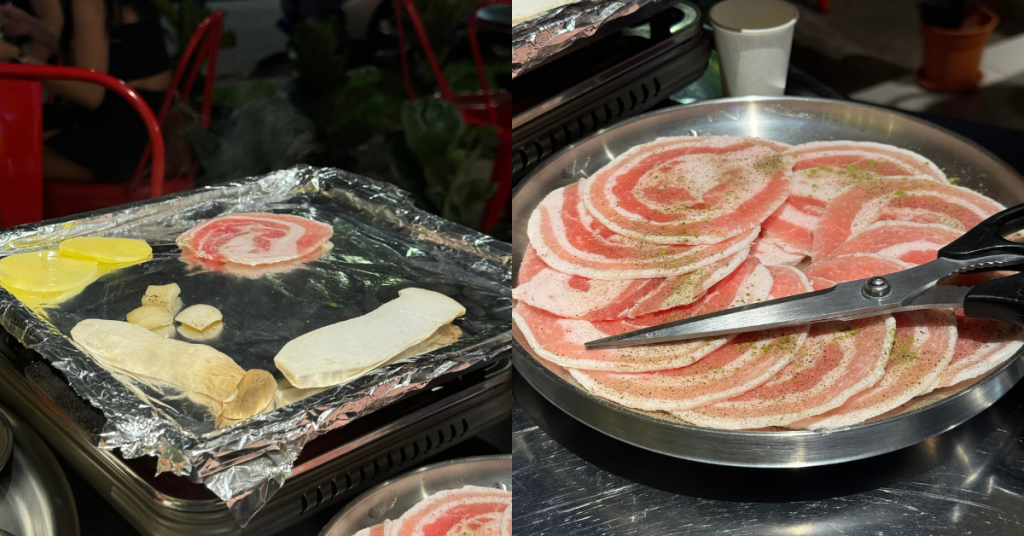
While the team hasn’t replied to my interview questions, they have mentioned that it’s a family business. From there, I learnt I was liaising with the owner’s daughter, but that’s the extent of all the factual information I have.
In my four visits there, I’ve always encountered the same few waitstaff, which to me shows that turnover rate isn’t high so hopefully conditions are decent. They’re always super helpful, too, stepping in unprompted whenever they spot us struggling.
About the food
Sentiments also appear to be varying online, with some saying they dislike the food or find the meat too thinly sliced.
Taste is subjective, though, and my taste says that Jojo Sikdang offers some of the best Korean food I’ve had. And I just went to Korea in March.
Their meats are served with a tray of refillable sides (or banchan), including kimchi, jeon (pancake), garlic, doenjang (fermented soybean paste), lettuce, and perhaps most unique is the pajeori, which is a spicy green onion salad.
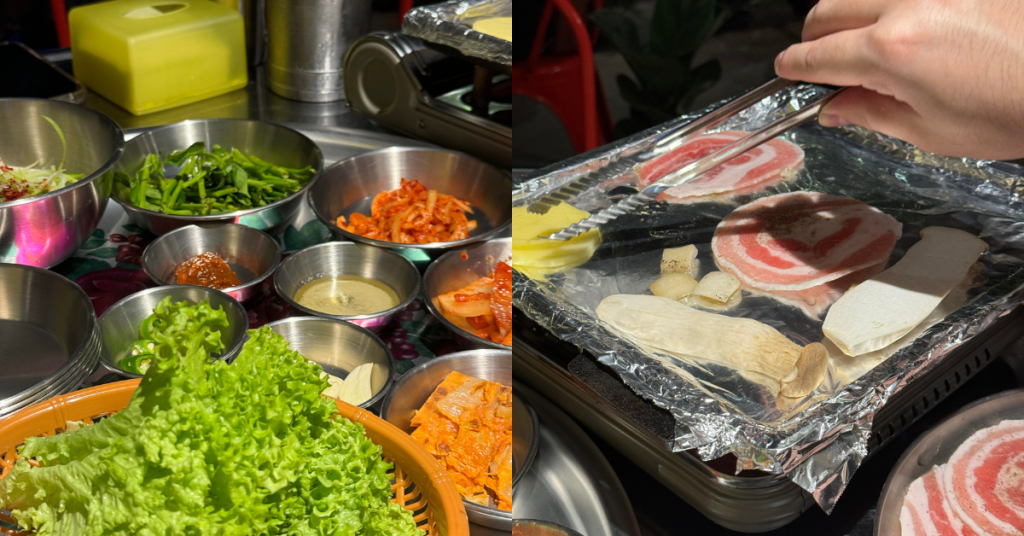
Instead of wrapping a lettuce around the meat, you can wrap the salad with your meat for a refreshing, slightly tangy bite.
The flavour of the (refillable!) kimchi is to my liking, but again, that’s pretty subjective. I wish I could tell you that it was fermented using generations-old recipes, but alas, I know nothing of the history of the business.
Now, to address some concerns. Why use foil? Well, Jojo Sikdang uses it to keep the meat tender and juicy and to prevent charring.
(Not to sound pretentious, but local places in Korea also use foil—it’s perfectly “authentic” in casual contexts.)
Beyond their classic kkot sam (RM27), other signature cuts include the kkot moksal (thinly sliced pork shoulder), and one of my favourites, the yangnyum moksal (soy sauce-marinated pork shoulder) which is priced at RM28.
Note that getting two servings of meat gives you a small discount.
I also really, really recommend their kimchi jiggae (kimchi soup), which is umami and salty, but not spicy. It’s RM25 and comes with a fair amount of pork. Perfect with a bowl of white rice (RM5).
The RM18 steamed eggs are also delicious—fluffy and bursting with cheese.
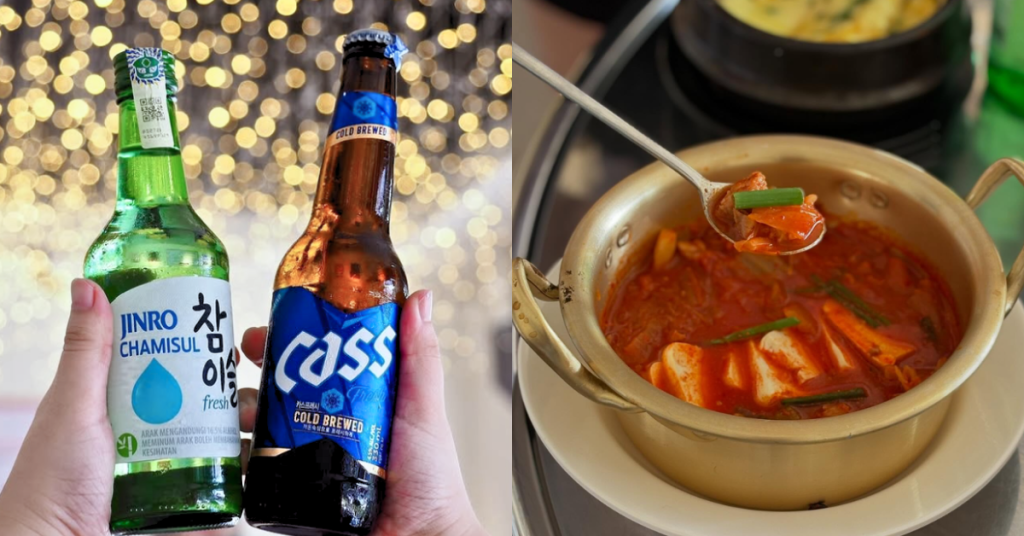
If you drink, they have some decent offerings, too. For RM28 each, they have Cass beer, perfect for lager lovers, as well as Korean classics soju and makgeoli.
There’s also a unique lemon soju (RM33), which isn’t flavoured soju like you might think, but straight up just plain soju mixed in with lemon juice inside an aluminium kettle. There’s also cucumber soju, which I haven’t tried but believe is the same concept.
I wouldn’t call this pricing “affordable,” but I do think it’s good value for your money. It’s a nice environment with friendly people and delicious food. What more could I ask for?
Call me, maybe
The truth is, I do feel sidelined by the fact that Jojo Sikdang forgot about (or has elected to ignore) little old me.
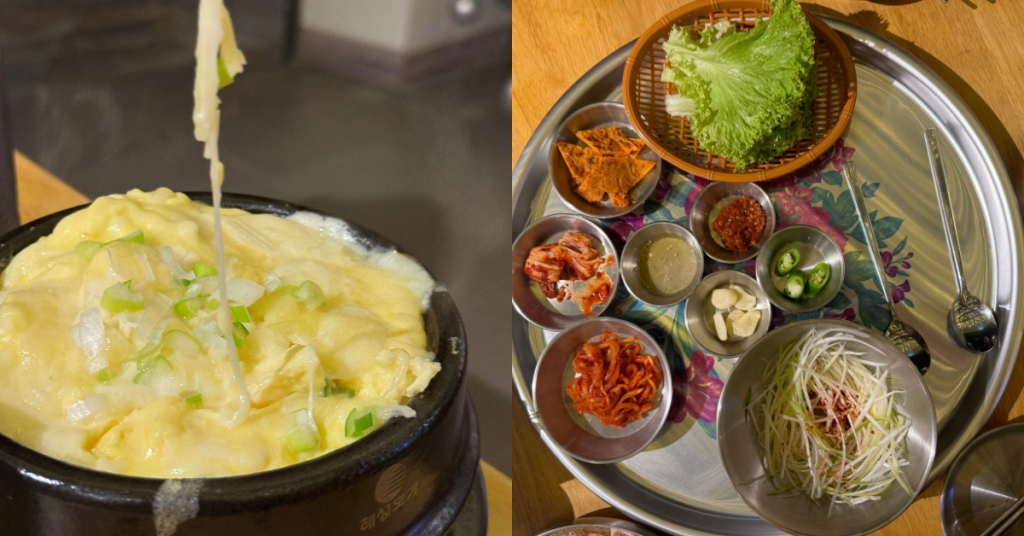
What’s in it for me? Well, I’m not sure. More than curiosity, I just believe that their story is worth being told.
Here at Vulcan Post, we often share stories of Malaysian startups and SMEs. Now and again, though, these small businesses would tell us that they don’t feel like they’re big enough to talk to the media.
So maybe this article is a cry into the void to go against that thought. Perhaps it’s an occupational hazard, but I really believe there’s always a story somewhere, you just have to find and tell it.
Yes, these businesses don’t owe me anything. Still, I hope that perhaps one day, I’ll get to share the stories behind businesses such as Jojo Sikdang.
Also Read: Why the M’sian co-founder of this Australian marketing co. is now expanding the biz back home
Featured Image Credit: Jojo Sikdang
How this M’sian ended up opening a fresh pasta bar on the 3rd floor of a a PJ office building
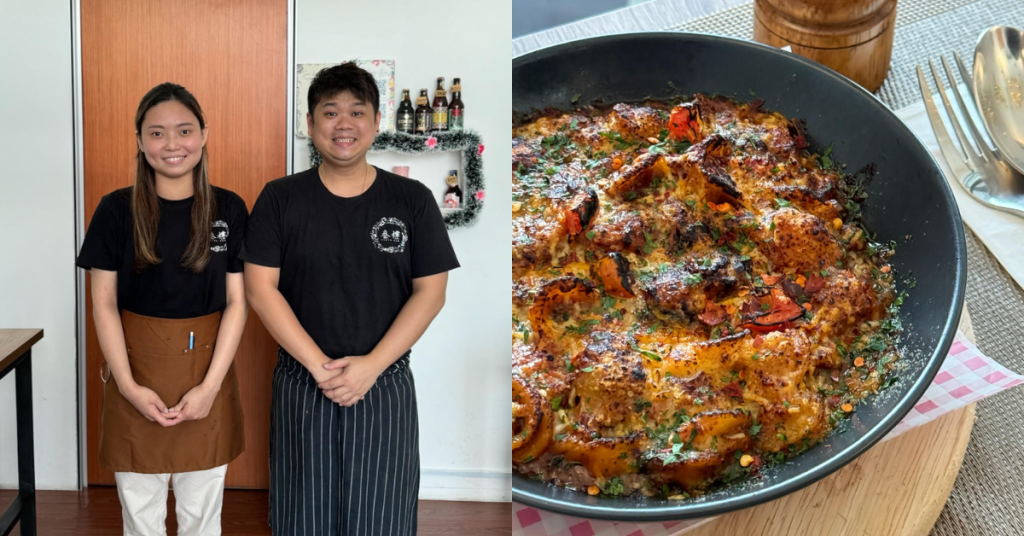
The third floor of an office building in PJ might seem like an unlikely spot to find freshly made pasta, but that’s exactly where you’ll find San Lou Pasta Bar.
Behind the pasta bar is 32-year-old Stephen, whose journey in F&B started a long time ago.
Growing up in Mentakab, a small town in Pahang, Stephen was surrounded by food. His family has always been in the business, with his grandparents running a catering service and school canteen, while his parents sold satay and chicken rice.
“I started helping out when I was just seven,” he said. “Growing up surrounded by food didn’t just teach me recipes; it ignited a passion that shaped my entire journey in the F&B industry.”
It was no surprise that he took up a culinary diploma and went on to work at Basilico, an Italian restaurant in Singapore’s Regent Hotel.
His entrepreneurial journey only began after returning from Singapore during MCO, though.
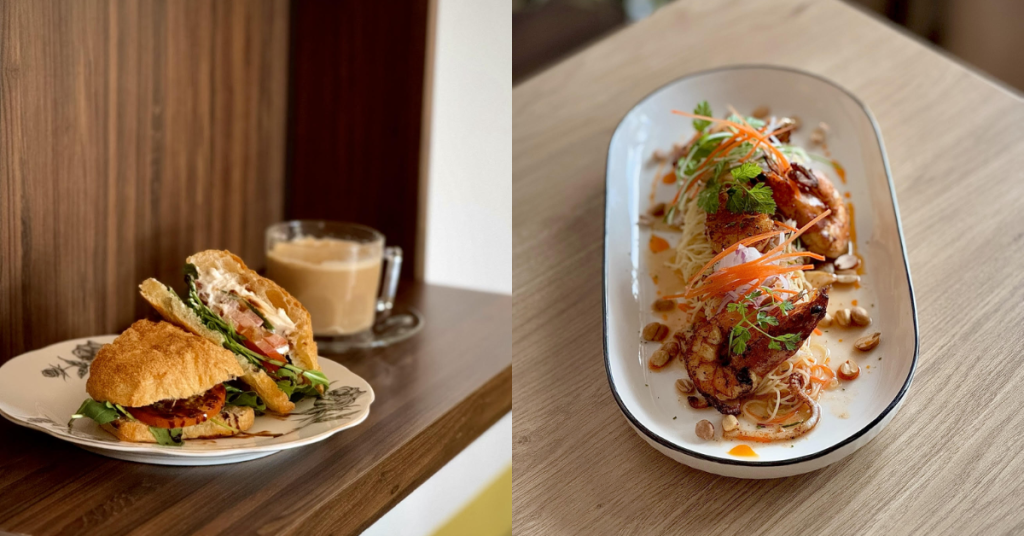
Back in his hometown, Stephen began selling door-to-door bento deliveries, and later expanded to selling ready-to-eat foods such as frozen meat rolls, burger patties, and stuffed dou pok at his hometown’s wet market.
From there, he opened a stall at a hawker centre serving pork burgers and simple cafe pastas like bolognese and cream carbonara.
“Only to discover my hometown’s aunties and uncles were strictly Team Wanton Mee, not Team Pasta,” he said.
Believing in his vision, though, Stephen moved his operations to Kuala Lumpur. With a condo-kitchen setup, he sold frozen food and bento deliveries to offices.
Bit by bit, demand grew, and he upgraded into a proper kitchen space at Infinity Tower. It was originally meant to be a central kitchen, but things suddenly changed when MCO officially ended and dining trends shifted. People were out and about, sick of deliveries and home cooking.
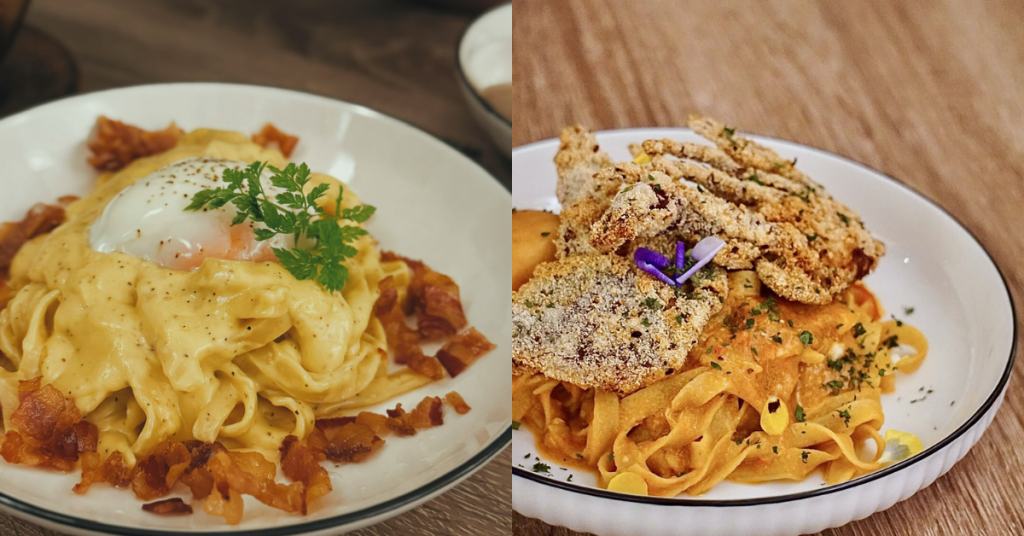
“I faced my toughest challenge yet. With limited capital, all the equipment I’d bought for the central kitchen, and a whole lot of unwillingness to give up at that point, I made my final pivot with one thought in my head: ‘Die jiu die la—better than nothing!’”
So, Stephen locked in and focused on what he knew best: pasta.
Offering a local twist
Drawing from his experience at Basilico, Stephen transformed the space into San Lou Pasta Bar.
The spot specialises in Asian-Italian fusion pasta cuisine, balancing authentic Italian techniques with local inspirations.
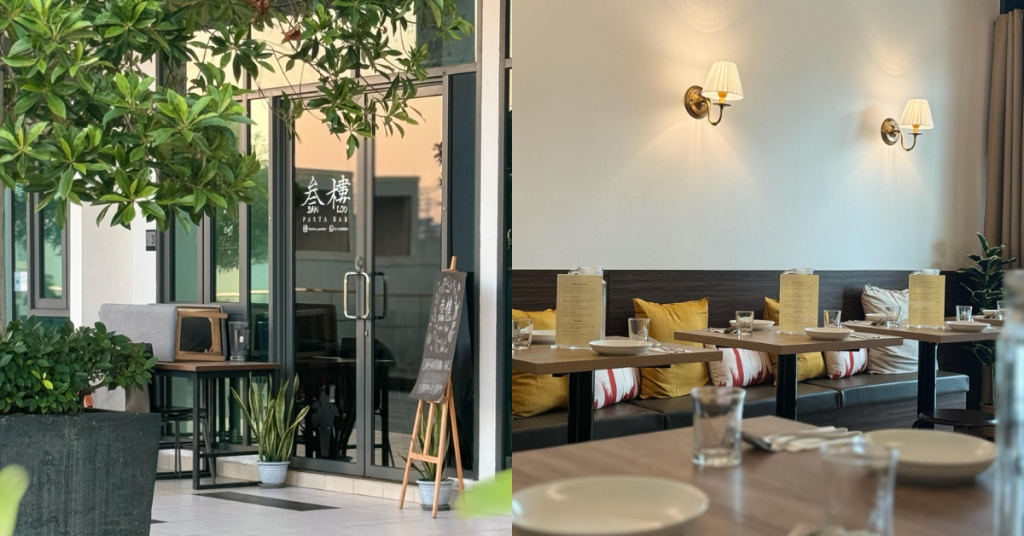
One of their best sellers include the Kambing Stew Rigatoni, which reimagines Stephen’s grandmother’s lamb chop recipe in pasta form.
“As a Malaysian Chinese running an Italian restaurant, I realised simply claiming ‘authenticity’ might not convince everyone,” he shared. “So instead, we celebrate both worlds with our slogan: ‘preserving heritage, embracing local,’ where my culinary training meets my cultural roots on every plate.”
Some other interesting menu items include the Burrata Bingsu, 8 Spices School Prawn, and Chili Crab pasta, amongst other starred dishes.
About 80% of the menu is handmade, Stephen revealed, from their signature tagliatelle and tortelloni pastas to all the sauces.
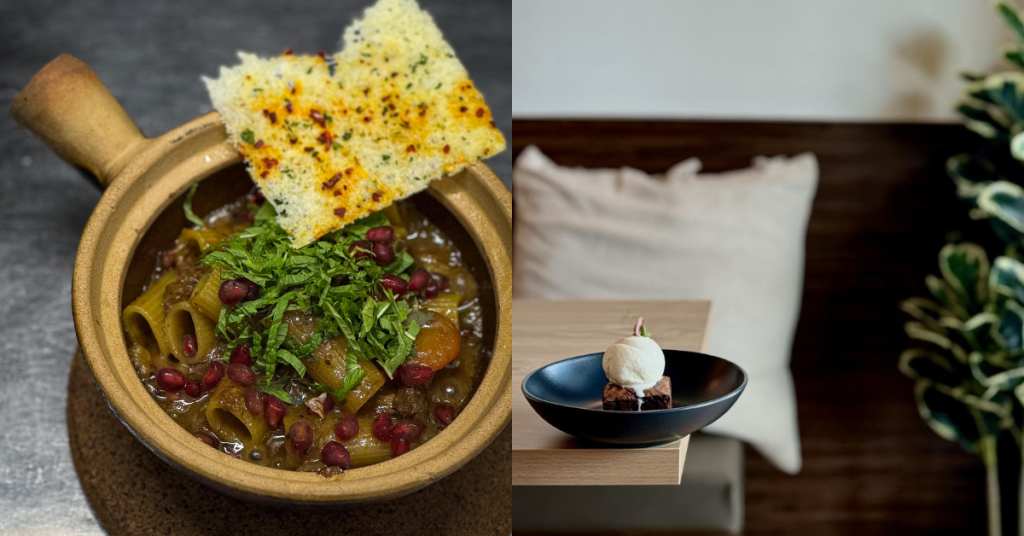
Making things fresh also means costlier operations, though. This is especially the case since San Lou uses key ingredients that are imported from Italy.
Despite this, the team endeavours not to raise their prices frequently.
Stephen explained, “When setting our menu prices, we intentionally keep them more economical and friendly—partly because our restaurant ambience isn’t fancy or atas, but more importantly because we genuinely want to serve good pasta that remains affordable for everyone.”
A dedicated service
Since San Lou’s location was initially meant to be a central kitchen, it’s not really the most suitable spot for a restaurant.
There are challenges such as less footfall, which not just affects customers but also labour.
Seeing the silver lining, Stephen shared, “But over time, we’ve realised some customers appreciate our unconventional location. Many tell us they enjoy the experience of discovering what feels like a hidden spot in the city.”
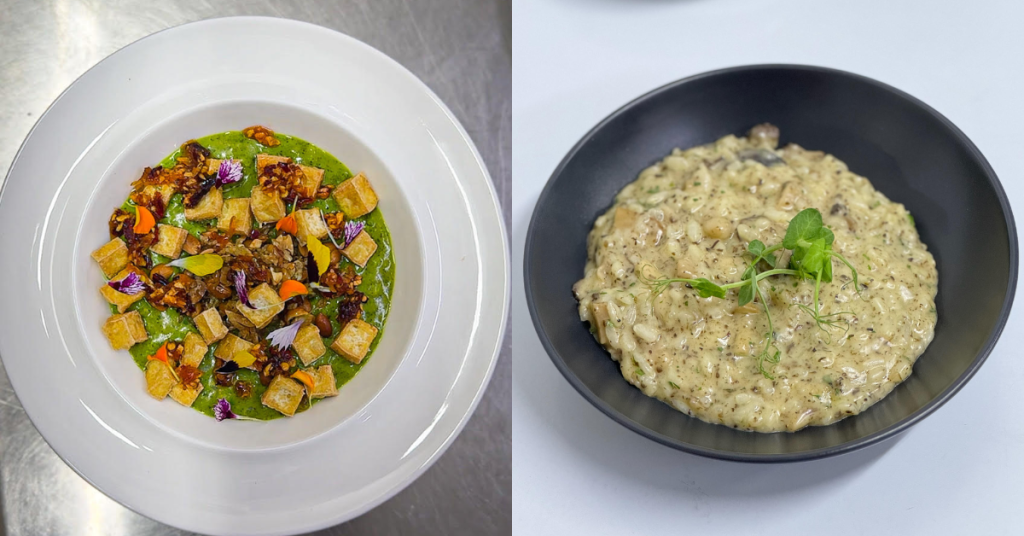
Fresh pasta has become quite a popular undertaking in Malaysia, though, from roadside stalls to kiosk-styled stores offering it.
But Stephen believes that San Lou’s promise of genuine homemade care at fair prices makes them stand out.
“Every detail—from the food and service to the cutlery customers use—reflects our dedication,” he insisted. “We polish our cutlery daily, and only serve dishes made fresh. If the quality of any ingredient falls short, we won’t use it.”
The team also takes pride in their service: Every dish is thoughtfully explained so guests can fully appreciate what they’re enjoying and the effort behind it.
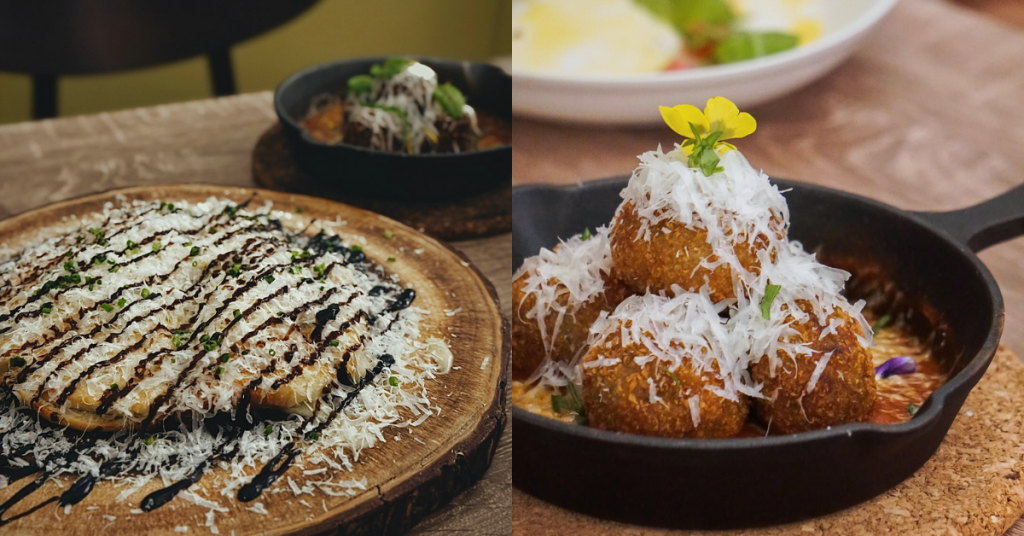
“From start to finish, we aim to deliver an experience that’s both heartfelt and high-quality, because we believe that’s what truly makes a place special,” he determined.
Not in it for the dough
Currently, the San Lou team comprises five dedicated members including full-timers, part-timers, and family members.
As time goes on, though, Stephen has every intention of expanding the team. He’s specifically looking to hire two key talents—a full-time front-of-house staff to enhance service, and a full-time kitchen staff to strengthen their kitchen team.
But like most F&B businesses, manpower is a struggle.
“There are days we even rely on family members to pitch in,” he pointed out.
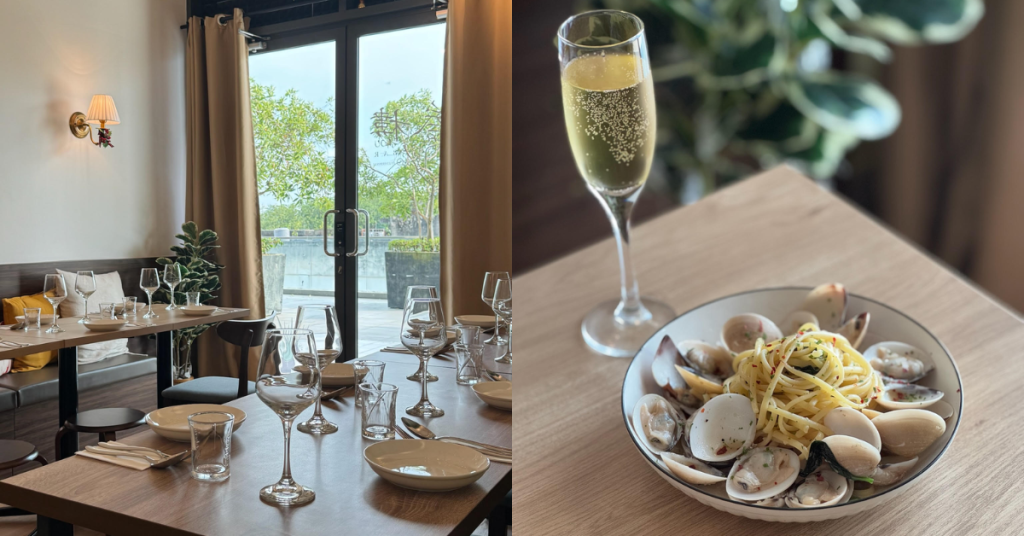
“But this makes our customer loyalty even more meaningful: My proudest achievement isn’t just surviving, but that over 70% of our customers are return guests who bring friends and family. When people come back for your pasta—not just once, but repeatedly—you know you’re doing something right despite the hurdles.”
With a stronger, more permanent team, Stephen has ambitions to expand San Lou. This involves not just expanding their menu, but also the restaurant’s facilities and atmosphere.
Evolving from his humble bento deliveries, he now hopes to deliver authentic Italian cooking with localised flavours to the masses.
- Learn more about San Lou Pasta Bar here.
- Read other articles we’ve written about F&B businesses here.
Also Read: Why Brisbane & Gold Coast should be M’sian travellers’ top Aussie destinations in 2025
Featured Image Credit: San Lou Pasta Bar

